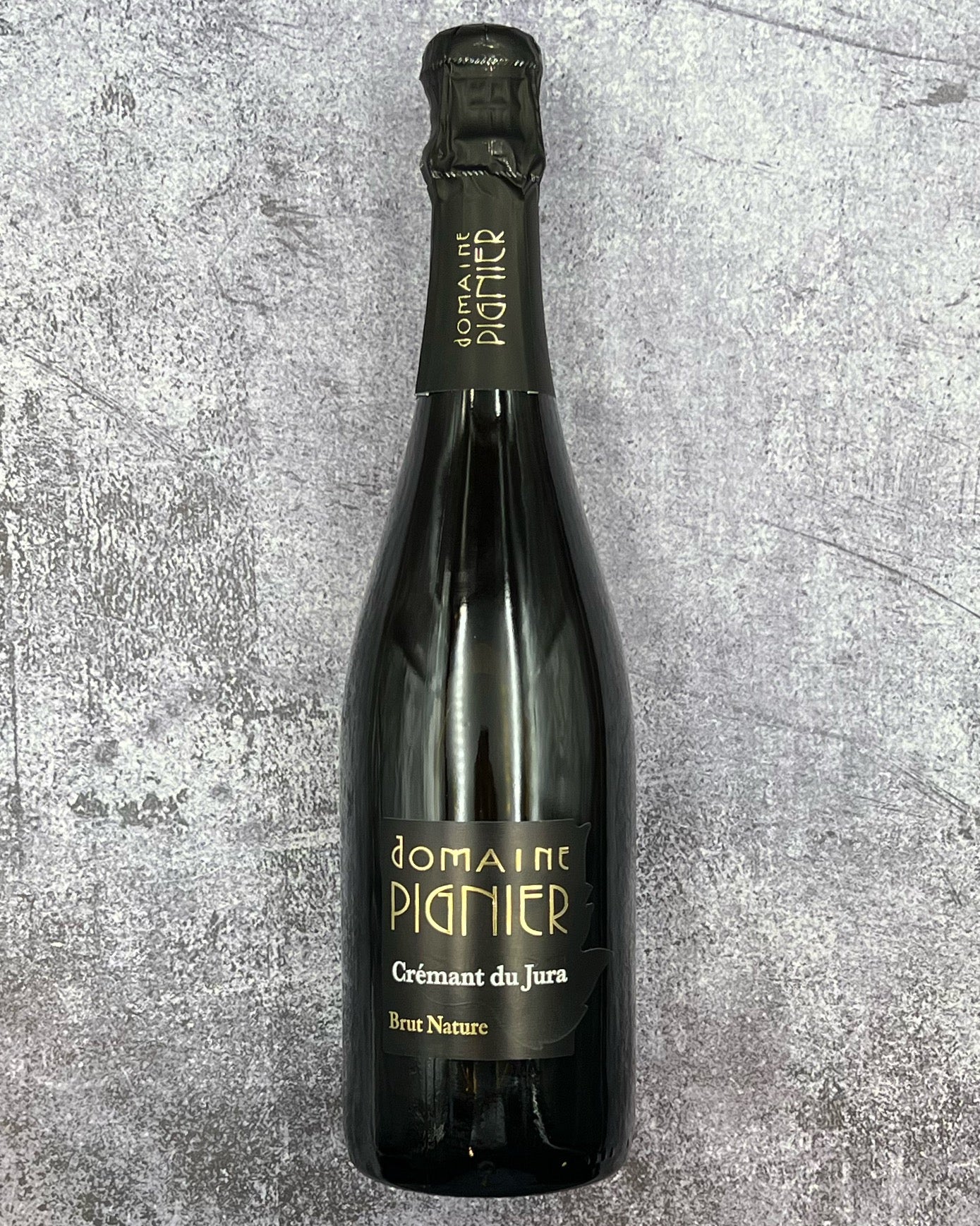Description
From: Jura, France
Blend: Chardonnay, Pinot Noir
Taste: The wine is pale golden with vibrant, fine bubbles. White flowers, green apples, zesty lemon citrus, and chalk, with subtle hints of baking spice, brioche, and toasted almond. The palate is crisp, rich, and refreshing, with a firm acidity that balances its richness. Flavors of chalky citrus, apple & apple skin, brioche, and mineral notes are present, leading to a racy and finessed finish.
Pairing: This gorgeous sparkling wine is an excellent match for appetizers and light dishes. It pairs wonderfully with seafood, especially grilled oysters or shrimp, though we love it next to poulet roti with sautéed mushrooms and baguette. For a regional pairing, try it with Comté cheese or dishes where Comté plays a significant role in composition, a specialty of the Jura region. Its effervescence and acidity cut through the richness of the cheese. Try this savory bread pudding featuring the region’s iconic cheese, Comté. This Crémant is also delightful as an aperitif.
Leek Bread Pudding
Recipe from Thomas Keller
Adapted by Kim Severson
About. Domaine Pignier is a winery with a rich and storied history that traces back several centuries, deeply rooted in the Jura region of France. The Pignier family's involvement in winemaking began in the 13th century when they managed vineyards as part of a Carthusian monastery. However, in 1794, during the French Revolution, the family officially acquired the property from the monks.
Since then, the Domaine has been passed down through generations of the Pignier family. Each generation has contributed to the evolution and development of the vineyard, enhancing its reputation for quality wine production. The winery is located in Montaigu, a village in the heart of the Jura region, an area renowned for its unique terroir and distinctive wines.
In the early 2000s, the Domaine underwent a significant transformation when it adopted biodynamic farming practices. This shift marked a return to more traditional and sustainable methods of viticulture, emphasizing the health of the vineyard ecosystem and the soil quality. The Pignier family, guided by their commitment to the environment and the quality of their wines, achieved Demeter certification for their biodynamic practices in 2003.
The NV Domaine Pignier Crémant du Jura Brut Nature is a product of the unique terroir found in the Val de Sorne gorge on the southern slope of Montaigu. This area is characterized by favorable south and south-easterly exposure, which ensures optimal sunlight for the vines. The soil in this region is primarily clayey limestone from the Rhaetian stage, which contributes significantly to the wine's mineral and complex flavor profile. The combination of the soil composition and the climate in this area creates an ideal environment for growing high-quality grapes, contributing to the distinctive character of the wine.
Domaine Pignier's approach to winemaking is deeply rooted in respecting and enhancing the natural qualities of this terroir. Since 2003, the vineyard has been tended biodynamically, with Demeter inspection and certification. This involves the application of horn manure, silica, and herbal teas, which align with biodynamic principles, aiming to create a self-sustaining ecosystem that reflects the essence of the vineyard. This method also helps preserve the grapes' wild yeasts, which are crucial in maintaining the authenticity and purity of the wine.
The careful handling of grapes is another cornerstone of Domaine Pignier's winemaking philosophy. The grape harvest is conducted exclusively by hand, with selective sorting done directly in the vineyards. This meticulous process ensures only the best grapes are chosen. Once harvested, the grapes are quickly transported to the cellars in small boxes. This practice prevents the bunches from being squashed, minimizing the need for sulfur dioxide (SO2) during vinification.
The cépage for the Crémant includes Chardonnay and Pinot Noir, with a yield of 2.9 tons per acre (45 Hl/Ha), reflecting a balance of quality over quantity. The vinification process begins with the fermentation of the base wines using only wild yeasts. The wines are then aged in both large wooden casks and smaller oak barrels, eliminating the final press juices to ensure purity and complexity. Bottling is timed precisely in the Spring on a 'flower' day, according to the biodynamic calendar, which is believed to enhance the wine's qualities. The bottles are then stored horizontally and allowed to mature on lees for 15 to 18 months, creating a wine with fine bubbles and nuanced flavors.

